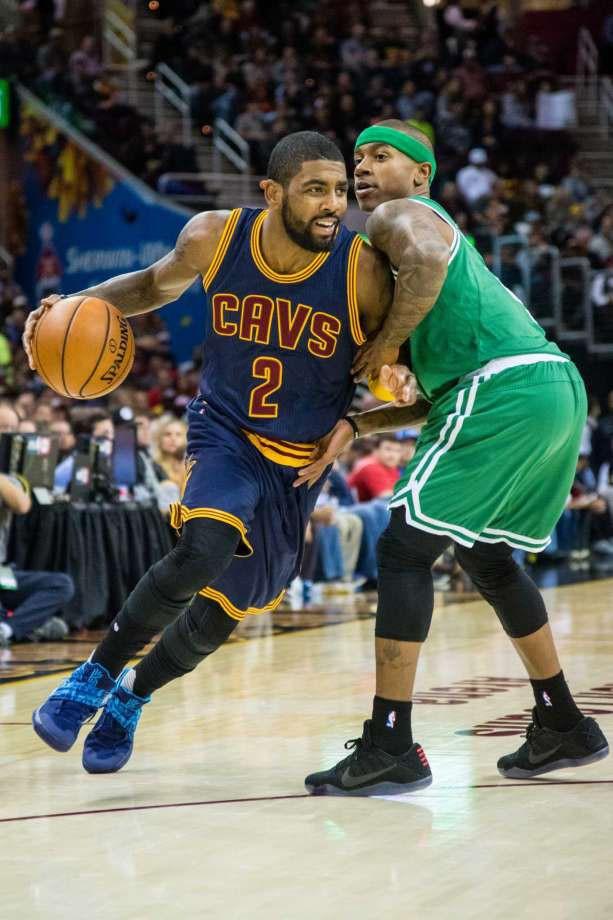Column: Breaking down the Kyrie Irving trade

GVL / Courtesy – Times Union
Aug 31, 2017
Whether you’ve been paying attention to it or not, the National Basketball League (NBA), as it is right now, has never been more popular (or exciting).
A major contributing factor has been this summer’s offseason of blockbuster trades and franchise-altering free-agency signings that have an equivalent amount of drama as an episode of Game of Thrones.
The latest trade that had fans of the NBA dropping their jaws involved Cleveland Cavalier superstar Kyrie Irving going to last season’s No. 2 team in the Eastern Conference, the Boston Celtics.
The Celtics major trade piece was Isaiah Thomas, a 5-foot-9-inch All-Star point guard standing who just had the best season of his career. Irving was the second-best player on the Cleveland Cavaliers, behind Lebron James, and just came off a third-straight trip to the NBA finals this past season.
On the other hand, Thomas became a crowd favorite this year in Boston while leading the storied franchise back to the Eastern Conference Finals. So, when the news broke out Tuesday, Aug. 22, that Irving was headed to Boston in exchange for Thomas, small forward Jae Crowder, center Ante Zizic and Brooklyn’s 2018 unprotected first-round draft pick, I thought fake news had made its way onto my Twitter feed.
Don’t get me wrong. Irving’s trade is no surprise, as the former Cavaliers point guard had made it known to the organization (and the media) that he wanted out when the season came to a close. The real surprise came from the Celtics, as Boston was never linked to any of the teams interested in acquiring Irving. After Boston signed All-Star Gordon Hayward, the team appeared to be in great shape for the upcoming season.
In order to understand why the Cavaliers shipped one of their brightest stars, here’s some background to the whole situation.
According to multiple reports from both sides of the trade, Kyrie Irving stated that he’s always wanted to lead a team, not play a supporting role. He did not know about Lebron James’ return until after signing the five-year max contract. Had he known, I believe he may have tried to find another deal elsewhere.
Irving is part of a point-guard generation that has revolutionized the game. In terms of accolades, Irving already has a ring under his belt, multiple All-Star selections and a Rookie of the Year award making him a franchise player at only 25 years old.
In terms of skill, Irving’s ball handling is among the top three in the NBA, and his range offensively allows him to score easily from outside and inside the three-point line. But if you dissect the trade closely, both teams gain exactly what they need to get better.
Lebron James was very vocal to acquire a playmaker and a stronger bench all of last season, and he gets both Thomas as his playmaker and the other two as added depth. Having a better distributor and scorer in Thomas will help facilitate the game for Lebron and the rest of the Cavaliers.
However, Thomas burdens Cleveland in one aspect: defense. His small stature makes it easy for opponents to shoot over or dribble past him, leaving the rest of the team to pick up Thomas’ slack. So in terms of quantity, it may seem like Boston gave a lot to acquire Irving.
However, there is no doubt they received the best overall player from the deal. His quickness, strength and agility gives him an edge on any players in this league.
If you thought the NBA offseason was crazy, just wait until the Celtics and the Cavaliers face off on the first game of the NBA season Tuesday, Oct. 17, in Cleveland.

























